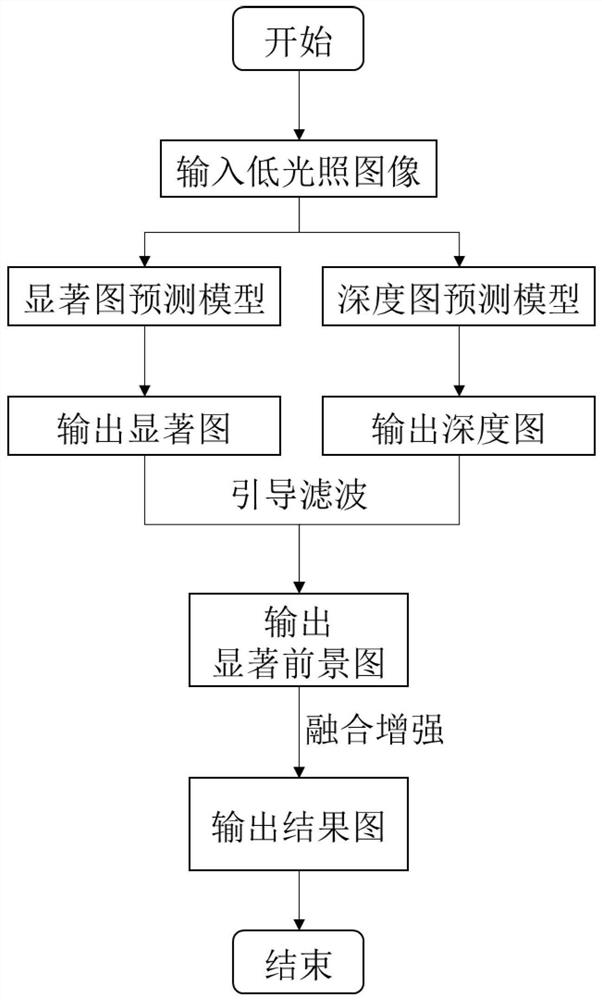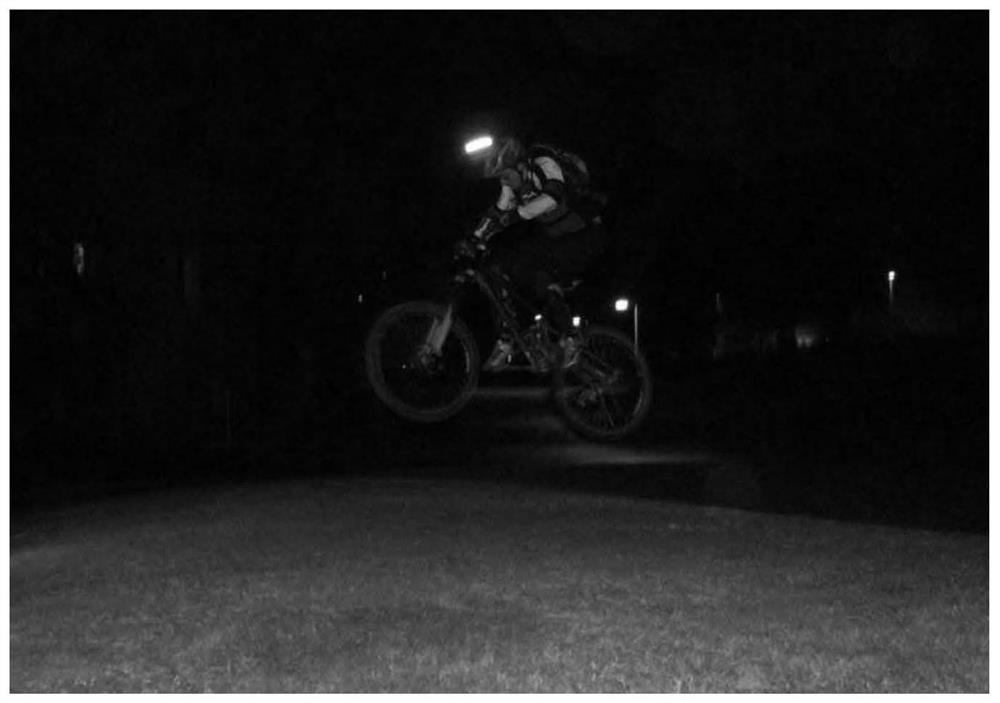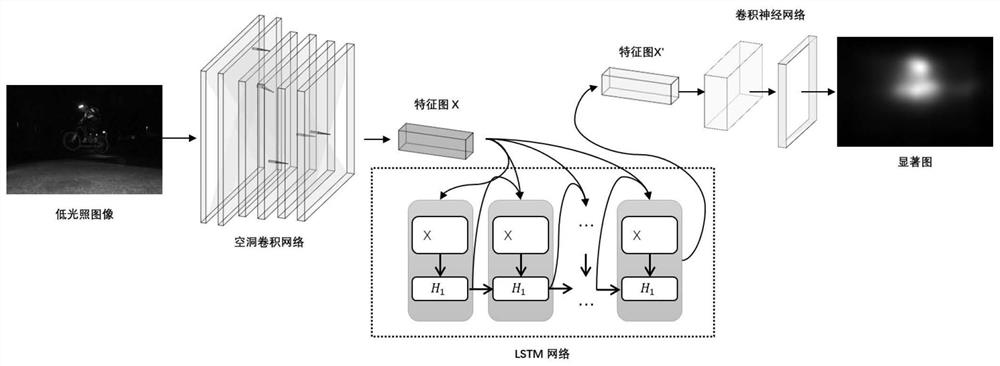A low-light image enhancement method based on saliency foreground content
An image enhancement and low-light technology, applied in the field of image processing, can solve the problems of image over-enhancement, amplified noise, over-enhancement, etc., and achieve the effects of significant content enhancement, avoiding noise amplification, suppressing over-enhancement and noise amplification
- Summary
- Abstract
- Description
- Claims
- Application Information
AI Technical Summary
Problems solved by technology
Method used
Image
Examples
Embodiment Construction
[0040] The invention provides a low-light image enhancement method based on saliency foreground content. First, the low-light image is input into a low-light saliency attention deep network model SAM (Saliency Attention Model), and an output saliency map is obtained. Next, input the low-light image to the depth prediction network model monodepth2 and output the corresponding depth map. The depth map is used as a guide map to perform guided filtering on the saliency map to obtain a salient foreground map. Finally, for the input low-light image, the LIME enhancement algorithm is used to enhance the low-light image to different degrees with the salient foreground image as the weight of the degree of enhancement, and finally the result map based on the salient foreground content enhancement is obtained.
[0041] see figure 1 , a low-light image enhancement method based on salient foreground content of the present invention, the specific steps are as follows:
[0042] S1. Low-lig...
PUM
 Login to View More
Login to View More Abstract
Description
Claims
Application Information
 Login to View More
Login to View More - R&D
- Intellectual Property
- Life Sciences
- Materials
- Tech Scout
- Unparalleled Data Quality
- Higher Quality Content
- 60% Fewer Hallucinations
Browse by: Latest US Patents, China's latest patents, Technical Efficacy Thesaurus, Application Domain, Technology Topic, Popular Technical Reports.
© 2025 PatSnap. All rights reserved.Legal|Privacy policy|Modern Slavery Act Transparency Statement|Sitemap|About US| Contact US: help@patsnap.com



